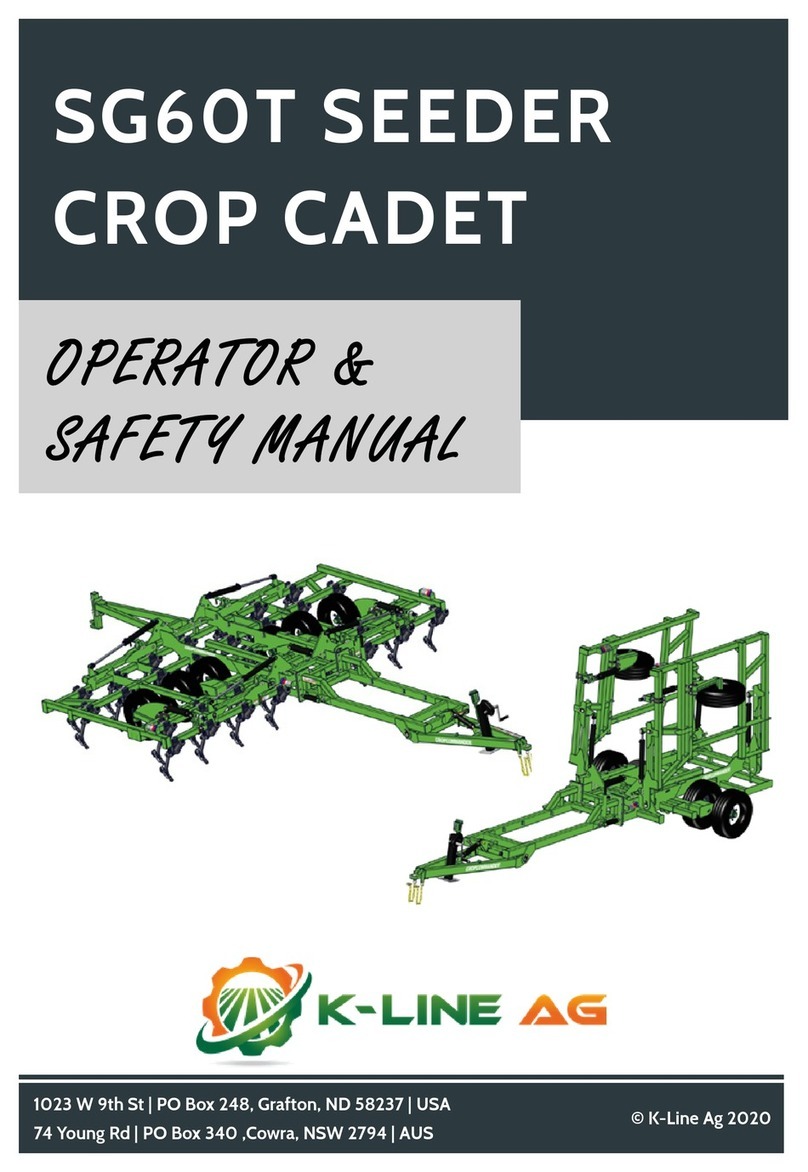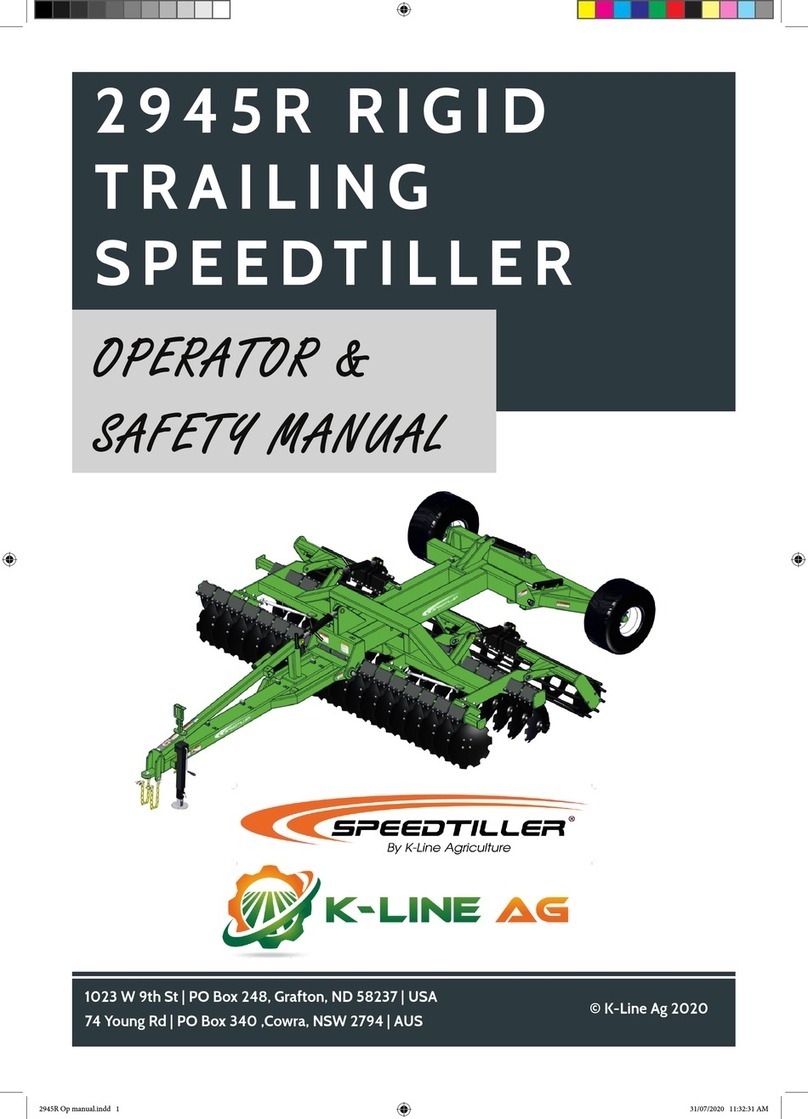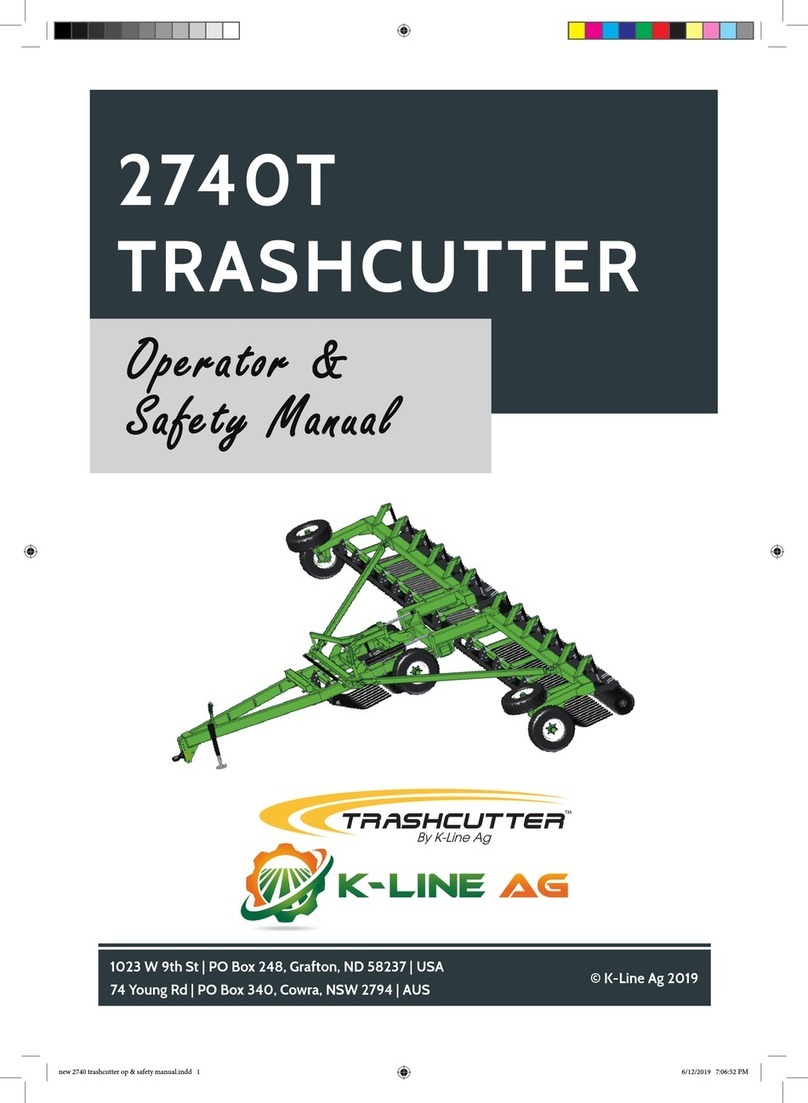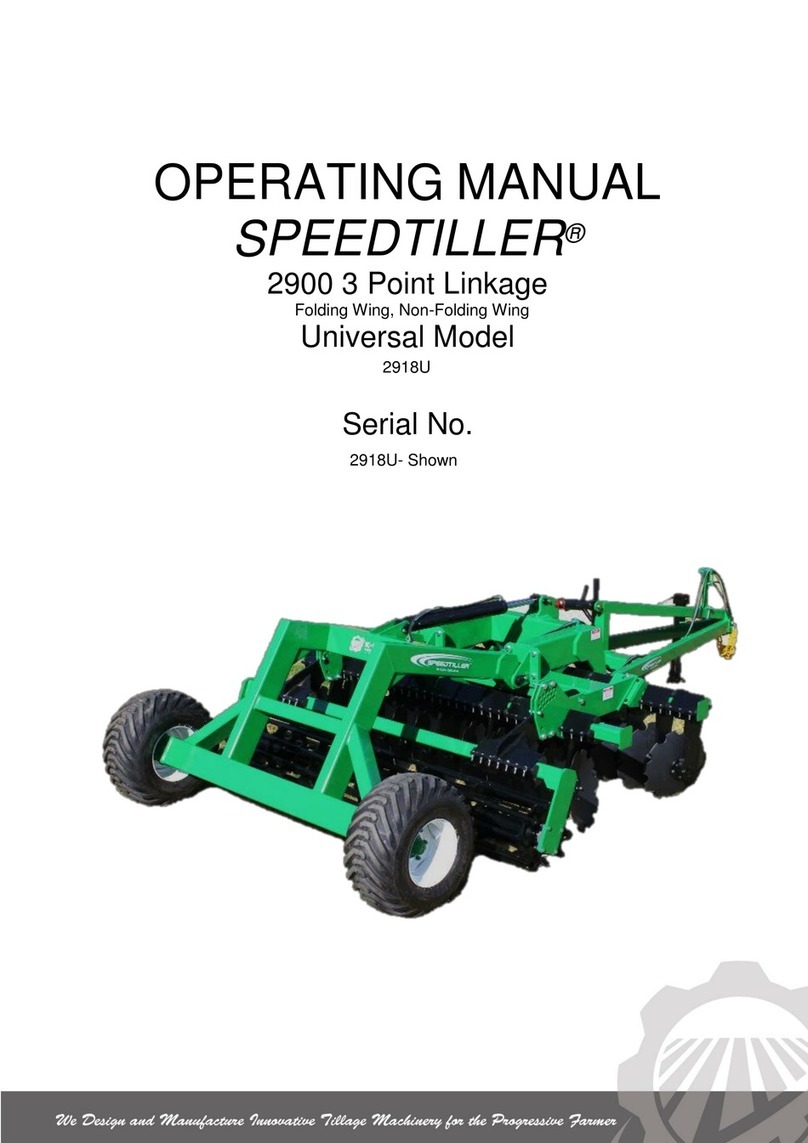
INSTRUCTIONS FOR SAFE
OPERATION
The machine should not be driven, maintained or repaired by people who are not aware of
the contents of this Risk Document.
This User’s Manual should be read and understood by all those who use, adjust or control
the machine. These safety instructions should be passed onto other users.
1. BE SURE tractor drawbar pin is locked securely in place.
2. Make SURE all personnel are clear of machine when folding/unfolding &
when in operation.
3. DO NOT activate unit while personnel are within 50 metres.
4. KEEP CLEAR of machine when in working & lifted position –AT ALL TIMES.
5. Hydraulic lines & hoses operate under extremely high pressure & if damaged
or worn MUST be repaired IMMEDIATELY.
6. Keep HANDS & BODY CLEAR of any oil leakage as high pressure oil can
penetrate the skin.
7. All bolts, nuts & pins MUST be well secured.
8. DO NOT stand on or ride on machine.
9. NEVER get under or on top of machine when it is supported by jack and
KEEP FEET & BODY CLEAR when operating jack.
10.NEVER alter the depth control or change to or from transport position, while
another person adjusts safety pins.
11.This machine has not been designed or built for road use. Please consult
State Police, Roads & Traffic Authority and any other relevant authorities
regarding the roads concerned when in transit.
12.DO NOT operate if any part of this machine is within 10 metres of overhead
power lines.
13.SPEED LIMIT –Subject to permit regulations, local Government Authorities,
road surface conditions & prime mover towing recommendations. Maximum
towing speed is 40km/hr. DO NOT EXCEED AT ANY TIME.
14.TYRE PRESSURE –Consult recommended tyre pressure table in this
manual.
15.Before operation, all hydraulic cylinders must be primed.































